|
Holidays on the Turquoise Coast |
|||
| Always worth a visit |
|
||
| Myra | |||
| Where Santa Claus was at home | |||
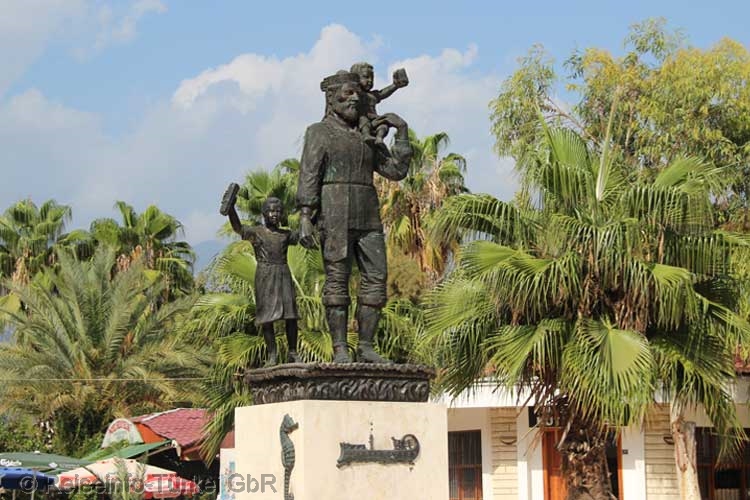 |
|||
|
The most famous building in Myra today is without doubt the church dedicated to St. Nicholas in the centre of the small town of Demre, on the northern outskirts of which the remains of the ancient town of Myra can be found. Nicholas of Myra was born between 270 and 286 A.D. in Patara and is today one of the most famous saints of the Eastern Churches. In the turmoil of Islamic Seljuks, Nicholas' bones were stolen by Italian merchants in 1087 and transported to Bari. However, the church did not completely lose its importance, even later pilgrims came to visit it. In the second half of the 11th century, a monastery was built next to it and the monks were given the care of the place of pilgrimage. |
|||
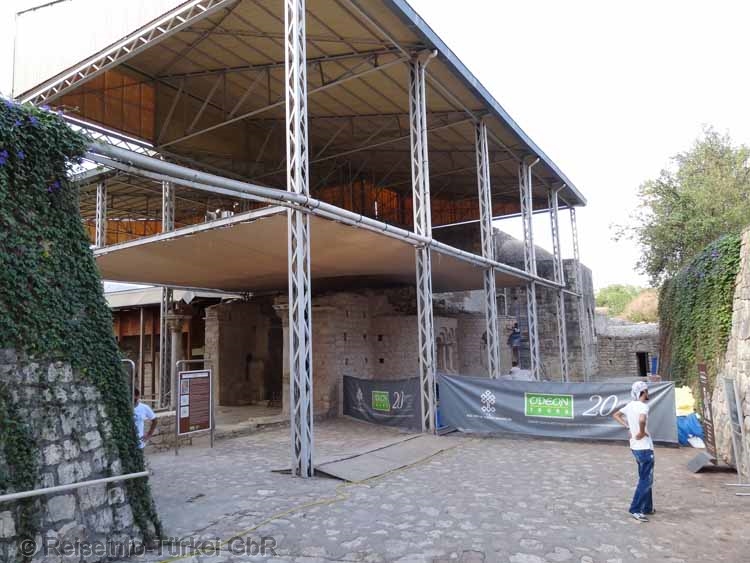 |
|||
| The roofed ruin of St. Nicholas Church | |||
|
Sunk for centuries in the mud of the Demre River, the basilica was acquired and partially restored in 1863 by the Russian Tsar Alexander II. Since 1963, the church has been gradually excavated and the damage caused by the Tsar's architect has been repaired as far as possible. Inside, Byzantine frescoes and Roman sarcophagi reused as spoilers can be seen alongside the presumed sarcophagus of Nicholas. |
|||
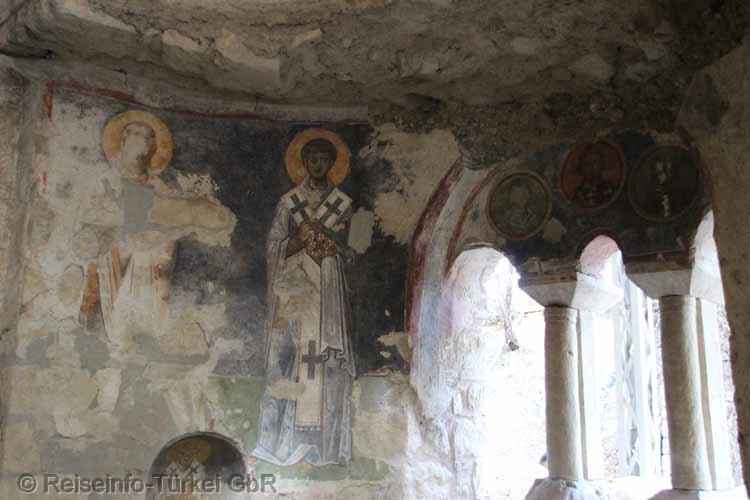 |
|||
| Wall paintings in the entrance area | |||
|
There are few proven facts about the life of historical Santa Claus. According to consistent tradition, Santa Claus was born between 270 and 286 in Patara. As a result, he was ordained a priest at the age of 19 by his uncle Nicholas, Bishop of Myra, and then abbot of the monastery of Sion near Myra. During the persecution of Christians in 310 he was captured and tortured. He distributed his inherited fortune among the poor. This is also reported by the better attested bishops of the 4th century Ambrosius of Milan and Basilius of Caesarea and is considered a historical fact there. In the case of Santa Claus, there are various legends about this. |
|||
 |
|||
|
The most famous St. Nicholas legend, from which today's St. Nicholas custom on 6 December is derived, is the following: An impoverished man intended to turn his three daughters into prostitutes because he could not marry them for lack of dowry. Nicholas, not yet bishop and heir of a greater fortune, learned of the plight and threw a large lump of gold through the window of the three virgins' room for three consecutive nights. On the third night, his father discovered Santa Claus, asked him his name and thanked him for it. According to this legend, the saint is often represented with three golden balls or apples as a saint's attribute. |
|||
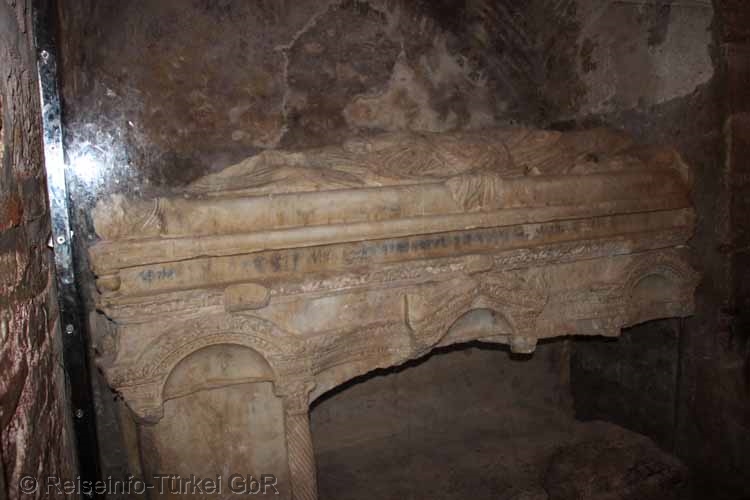 |
|||
| The vomited sarcophagus of Saint Nicholas | |||
|
|
|||
| Byzantine Chapel | |||
|
|
|||
| Byzantine Chapel | |||
|
Not far from the Roman theatre in Myra, a small Byzantine chapel from the 11th century was excavated for an irrigation channel. Chr. was discovered and uncovered. Inside there are very well preserved frescoes. |
|||
| The historical Myra | |||
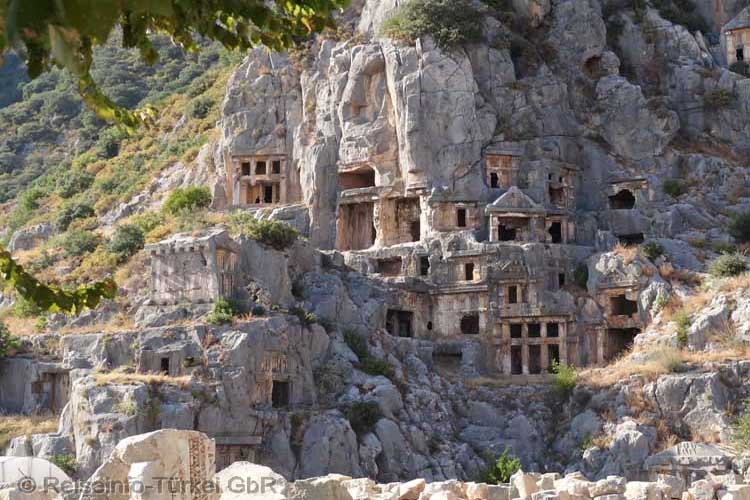 |
|||
|
For centuries the Myros, today Demre Çayi, carried sediments from the mountains towards the sea and covered the plain at its mouth with its deposits. |
|||
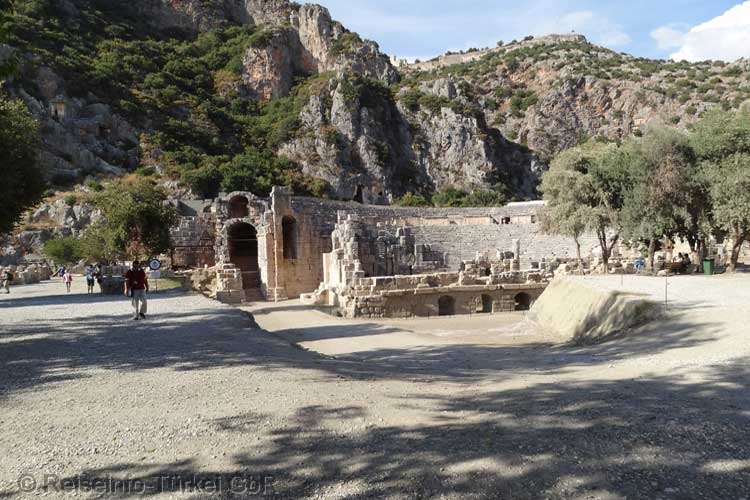 |
|||
|
Findings indicate that between the theatre and the bank of the river, which was close at the time, there was an agora surrounded by porticoes. This agora, which also serves as a theatre forecourt, is today, like most of the buildings of ancient Myra, completely buried under the alluvial plain of the river. |
|||
 |
|||
 |
|||
| Theater frieze | |||
|
Myra had good relations with Rome. Until a devastating earthquake in 141 A.D., Myra had a cult center of the goddess Artemis Eleuthera (Kybele) called "the largest and most magnificent of her temples". Whether the temple was rebuilt after the earthquake is uncertain, according to legend it was torn down by Bishop Nicholas of Myra himself.Truth and legend seem to be interwoven here, disregarding the chronology. In Byzantine times, Myra became a bishop's seat, whose most famous bishop was Nicholas of Myra. |
|||
 |
|||
 |
|||
| The former three-storey stage house | |||
 |
|||
 |
|||
 |
|||
|
The rock tombs of the so-called lake necropolis, next to the ancient theatre date from the 4th century B.C. Several simple burial caves alternate with elaborately decorated facades of real tomb temples, provided with false doors, partly decorated with reliefs with scenes of fighting warriors and others. |
|||
|
|
|||
| Rock tombs of the eastern necropolis | |||
|
If you drive around the Acropolis Hill from the theatre on the left, the attentive observer will recognize the rock tombs of the eastern necropolis between the greenhouses. Tourists driven to Myra by the agencies will not see these graves. |
|||
|
|
